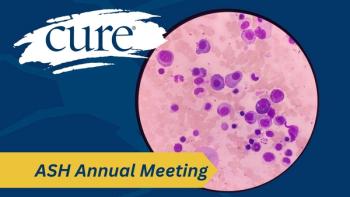
Sexual Aids, Resources Are Scarce for Cancer Survivors
The availability of sexual aids and resources available to cancer survivors at a wide array of cancer centers appeared disappointingly low, according to survey results to be presented at the 2018 Cancer Survivorship Symposium.
The availability of sexual aids and resources available to cancer survivors at a wide array of cancer centers appeared disappointingly low, according to survey results to be presented at the 2018 Cancer Survivorship Symposium.
Despite the fact that cancer treatment guidelines recommend for therapeutic aids to help with sexual rehabilitation, such as vaginal dilators, moisturizers or vacuum erection devices, survivors often don’t know where to access them or may feel too uncomfortable to even ask about them.
“Sexual dysfunction is one of the most significant and distressing problems for a majority of cancer survivors, and we also know that survivors are sort of either unsure of or not aware of how to get help for these problems,” Sharon Bober, Ph.D., Assistant Professor of Psychiatry at Harvard Medical School and Director of the Sexual Health Program at Dana-Farber Cancer Institute in Boston, said during an ASCO press cast.
To assess the severity of this problem, Bober and colleagues identified 25 NCI-designated cancer cancers or NCCN-member institutions to survey them on the availability of sexual aids and resources for survivors at their specific locations.
For starters, the researchers assessed which centers had potential sources for these therapeutic aids to actually be available, like whether there was a specialty retail shop or boutique available for men and women. Next, relevant retail staff at each center was contacted via telephone using a structure script while researchers of the study posed as a patient, spouse, adult child or sibling. Retail staff were queried about the availability of aids/resources, with separate calls made regarding aids for both men and women.
In addition, the researchers queried about access to aids elsewhere at the cancer center and recommendations for accessing resources if none were available.
Of the 25 cancer centers that were contacted, 23 responded about men and 22 about women, while two centers never responded to multiple attempts made by the research team.
Overall, 87 percent of the contacted cancer centers reported having no sexual aids for men and 72 percent having no aids for women.
For men, only one cancer center responded that they do in fact carry a vacuum device and two penile support rings. For women, six centers had some aids for women, including personal lubricants, moisturizers and dilators. Lastly, only one cancer stood out among the rest, carrying aids for both men and women.
“Only one center of the 25 had an extensive list of products and resources for both men and women, which may very well serve as a model when we think about the needs for our cancer survivors in general,” Bober said.
When researchers asked about additional resources outside of the cancer center, responses were limited to suggesting a local pharmacy or doing an internet search.
Compared with traditional cancer care products, Bober was disappointed in the findings. “I think the scarcity of all of these products really underscores the cultural taboos around sexual dysfunction, as did some of the discomfort of the staff responding to our calls,” she added. “And really in contrast to other therapeutic products and care products such as wigs and prosthetics and sun screen, the lack of availability was really notable.”
Moving forward, the researchers hope these results inspire cancer centers to make sexual aids and resources much more readily available, and in turn will open the conversation between survivors and their physicians.
“Our hope moving forward is perhaps using some of the centers that did have products to really think about how they can be used as a model because both for patients and professionals having therapeutic aids more accessible on site really promotes sexual rehabilitation and also allows providers to start conversations with patients when they feel they have resources they can refer to,” said Bober.
Timothy Gilligan, M.D., MSc, FASCO, an ASCO Expert in Survivorship Care and a medical oncologist at the Cleveland Clinic Taussig Cancer Institute, agreed, highlighting the urgency of this unmet need among both male and female cancer survivors.
“What really stood out to me in this study is we are not meeting the need in this area, and it looks like we are not coming anywhere close to it,” said Gilligan, who moderated the press cast. “You start to wonder: Where are cancer patients supposed to go to get this information if not at the cancer center? So, we are really leaving them short-changed here. The good news is I think we could easily do better if we just decide that we want to.”





